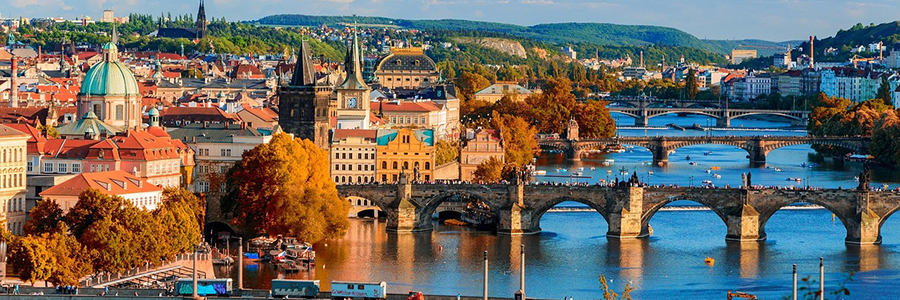Democracy after the Velvet Revolution under Václav Havel
 The Czech Republic is composed of the historical countries Bohemia (Czech Čechy) and Moravia (Czech Morava) as well as parts of Silesia (Czech Slezsko). In the 6th century, the Slavs migrated to Bohemia, in the 7th century the area became part of the Samo Empire. At the beginning of the ninth century, the Czechs were conquered by the Franconian Empire. At the end of the century, they became a part of the Moravian empire.
The Czech Republic is composed of the historical countries Bohemia (Czech Čechy) and Moravia (Czech Morava) as well as parts of Silesia (Czech Slezsko). In the 6th century, the Slavs migrated to Bohemia, in the 7th century the area became part of the Samo Empire. At the beginning of the ninth century, the Czechs were conquered by the Franconian Empire. At the end of the century, they became a part of the Moravian empire.
In the course of the Ascension of the Habsburgs and the Thirty Years' War, the area became part of the Habsburg monarchy and remained until the end of the First World War and the fall of Austria-Hungary. The reform movement of the Prague Spring was suppressed in 1968 by Warsaw Pact troops. In 1989, after the Velvet Revolution under Václav Havel, democracy was restored.
Between January 3 and 5, 1968, the Central Committee of the Czechoslovak Communist Party KSČ deposed President Novotný. Alexander Dubček became chairman of the KSČ, General Ludvík Svoboda became president. The censorship was lifted at the beginning of March. The “Prague Spring” began, and further development was largely spontaneous. On April 5, 1968, an action program was adopted by the KSČ under Alexander Dubček. The aim was “socialism with a human face” (guaranteed freedom of assembly, small entrepreneurship, release of political prisoners).
Es gibt keine Beiträge in dieser Kategorie. Wenn Unterkategorien angezeigt werden, können diese aber Beiträge enthalten.